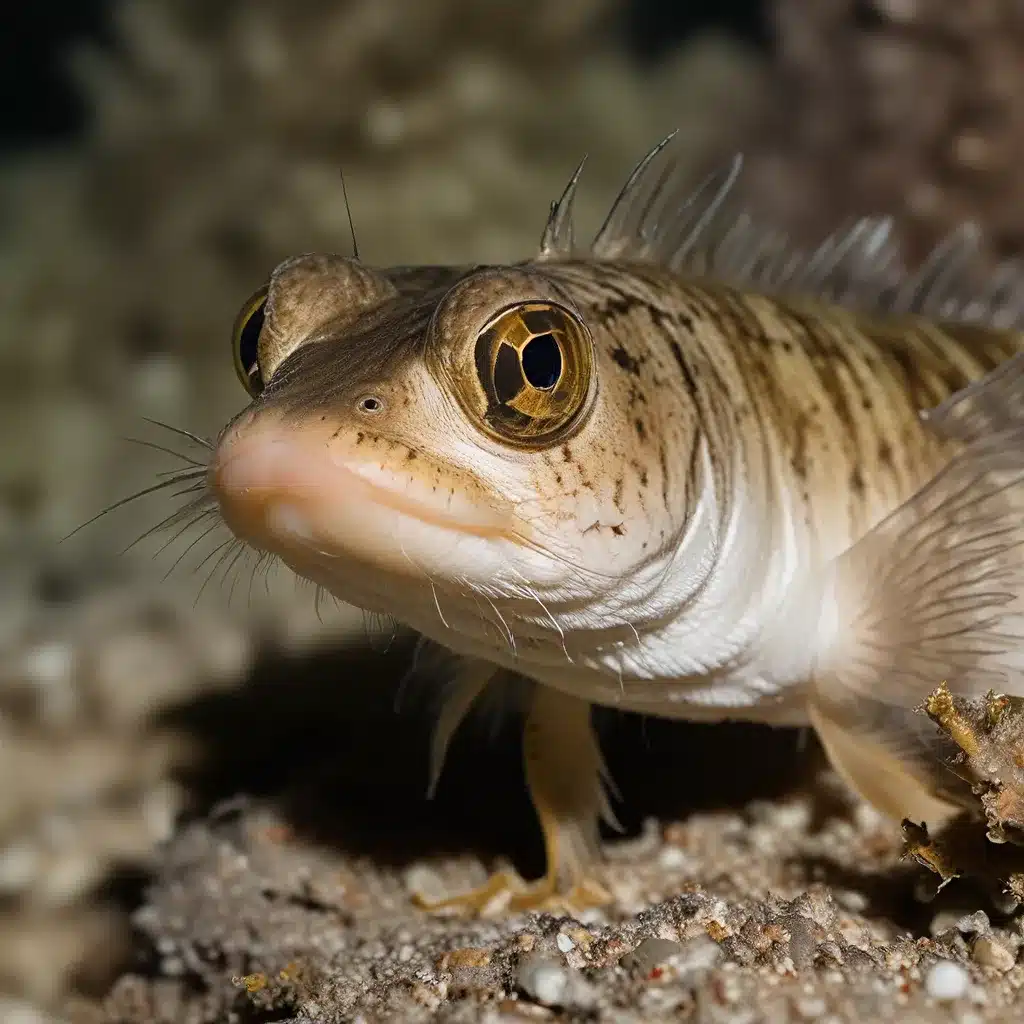
Gobies: The Ocean’s Hidden Gems
Gobies are a fascinating and diverse group of fish that have captivated the attention of aquarists and marine enthusiasts worldwide. With over 212 genera and a staggering 1875 species, this family is the largest among marine fish, making it the most species-rich family of vertebrates. Their remarkable adaptability, unique behaviors, and stunning visual displays have earned them a rightful place as the stars of the aquatic realm.
One of the most impressive aspects of gobies is their remarkable ability to exploit a wide range of habitats, from subarctic streams in Siberia to high-altitude mountain streams and ocean depths of up to 800 meters. These diminutive fish have mastered the art of occupying microhabitats, thriving in the cracks, crevices, and burrows that larger fish cannot access. Whether they are found in the vibrant coral reefs, the tranquil mangrove swamps, or the dynamic tidal pools, gobies have a remarkable talent for adapting to their surroundings.
Gobies: Masters of Camouflage and Communication
Gobies have evolved an impressive array of physical adaptations to thrive in their diverse environments. One particularly fascinating group is the mudskippers, which have developed the ability to venture onto land, thanks to their muscular tails and highly vascularized skin that allows them to absorb atmospheric oxygen. These amphibious gobies can often be seen skipping over the mud, foraging for crustaceans and insects, a true testament to their evolutionary ingenuity.
Aside from their physical adaptations, gobies have also developed highly complex communication systems, utilizing a variety of visual, chemical, auditory, and even olfactory cues. From the neon-colored reef species that use their vibrant hues to attract mates, to the frillfin gobies that employ a sophisticated suite of courtship behaviors involving pheromones and knocking sounds, these small fish have proven to be masters of communication.
Gobies in the Aquarium: Captivating Inhabitants
Given their unique attributes and fascinating behaviors, it’s no surprise that gobies have become increasingly popular in the aquarium trade. These diminutive fish can make for captivating inhabitants, adding a touch of vibrancy and intrigue to any well-designed aquatic setup. However, keeping gobies in captivity requires a keen understanding of their specific care requirements, as their small size and specialized needs can pose challenges for the inexperienced aquarist.
When it comes to housing gobies, it’s essential to provide them with ample hiding spots and a substrate that allows them to burrow and establish their territories. Many species, such as the popular Coryphopterus and Lythrypnus gobies, thrive in well-decorated aquascapes that mimic their natural environments, with a mix of live rock, caves, and dense vegetation.
Feeding and Breeding Gobies in Captivity
Feeding gobies in the aquarium can be a delicate balancing act, as they have diverse dietary requirements. Many species are zooplanktivores, feeding on a variety of small crustaceans and invertebrates, while others are omnivores or even specialized carnivores. Providing a varied diet that caters to their specific needs is crucial for maintaining their health and vibrant coloration.
Breeding gobies in captivity can also be a rewarding but challenging endeavor. These fish exhibit a wide range of mating systems, from promiscuous to monogamous, and some species even display unique behaviors like male parental care or protogynous hermaphroditism. Careful observation and a well-designed breeding setup are essential to successfully spawning and raising these fascinating fish.
Gobies in the Ecosystem: Keystone Species and Conservation Concerns
Beyond their captivating presence in aquariums, gobies play a vital role in the overall health and balance of the ecosystems they inhabit. As one of the most abundant groups of fish in many marine and freshwater environments, they serve as a crucial link in the food chain, providing sustenance for a wide range of predators.
In some cases, gobies can even be considered keystone species, particularly in the freshwater habitats of small oceanic islands, where they may be one of the few fish species present. Their importance in these delicate ecosystems cannot be overstated, making their conservation a matter of utmost priority.
Unfortunately, many gobies face threats to their survival, with some species already listed as critically endangered. Factors such as habitat loss, the introduction of non-native species, and agricultural practices have all contributed to the decline of these remarkable fish. As responsible aquarists and stewards of the aquatic environment, it is our duty to support conservation efforts and ensure that these hidden gems of the ocean continue to thrive for generations to come.
Embracing the Diversity of Gobies in Your Aquarium
Whether you’re a seasoned aquarist or a newcomer to the hobby, exploring the captivating world of marine gobies can be a deeply rewarding experience. By understanding their unique care requirements, communication, and ecological significance, you can create a thriving aquarium environment that showcases the beauty and diversity of these remarkable fish.
At King Aquarium, we are passionate about sharing our expertise and helping aquarists like you discover the wonders of the underwater realm. From providing high-quality livestock to offering guidance on aquascaping and water management, our team is dedicated to empowering you to create a captivating aquatic oasis that showcases the vibrant and diverse world of marine gobies.

